Every few years I like to take a road trip to watch the New York Yankees play in another team's ballpark. My past trips include Baltimore, Pittsburgh, Florida, Queens against the Mets (if that counts), and after looking at the 2012 schedule several weeks ago, a trip to Washington D.C. against the Washington Nationals seemed ideal. Not only would it be a new ballpark against a very good Nationals team, but D.C. is loaded with landmarks and museums I've always wanted to see.
As a rewards member of Amtrak, I wanted to add more points to my account, so I picked the train as my mode of transportation to D.C., the only issue was the lowest priced ticket left Penn Station at 6:05am. Than meant I had to wake up a few hours earlier than that to take the subway into the city. I figured I would be the only one riding on the subway that early in the morning, homeless people sleeping on the seats aside, but surprisingly there were a good amount of people heading into work it seemed. They seemed like busboys and hotel staff mainly, and I was happy they were on board compared to what I was expecting. The ride down to Washington D.C. from New York is only about three-and-a-half hours, and just a little before 10am, I was already at Washington's Union Station. Taking Chicago and Dallas into account, this was the third version of a Union Station I had encountered in 2012. I always thought New York City was overloaded with security measures, but D.C. is worse. As soon as I got off the train, there were armed personnel and bomb-sniffing dogs all over. Other than that, Union Station is very large and well equipment with stores like Barnes-n-Noble and enjoyable eateries like Johnny Rocket's. Once I was outside, there was a very long line of people in suits lined up for cabs, and with the construction going on in the front as well, it was causing major traffic jams for the rest of the traffic. This logjam was probably a good metaphor of why nothing can get done with our government.
It was too early for me to check into my hotel, so with several hours to kill, a partial solution was located directly across the street from the station. It was one of the nineteen different Smithsonian Museums located in the city, the Postal Museum. So for a real rush of adrenaline, I went inside to check out the history of the US Postal Service. To my delight, and the same goes for all the other Smithsonian Museums, the entrance fee is zero dollars. The only price to pay was the airport-style security screening I had to go through. In fact, the security guard even had me open my bag to take a look inside the side pocket; the tube of colgate must have looked like C-4. Once inside there were plenty of old vehicles, planes, trucks, sleighs, and even a train car that was used to transport mail via the rail many years ago. There were some interesting facts about the vehicles, like the mail jeeps for example, they are specially built to withstand a larger amount of potholes than a normal car or jeep could. There was the story of one of the early mail routes from New York to Massachusetts that was called "The King's Route", which today is Route U.S. 1. Another interesting fact was that during the early days of mail delivery, bars and inns were used as drop-off points for people to pick up their mail, which then gave them a good excuse to have to go to the bar for a drink. Then there was a replica of Owney the Dog. This dog belonged to a postal worker around the year 1900 and used to go to work with his master each day to the mail train. One day, the master left his postal job, but the dog didn't quit. He kept the same routine of riding the mail train and was a well-traveled dog. As a result, people showed their appreciation to the dedicated mail-pooch by awarding it with metals. After the dog passed away, mail workers wanted to preserve the memory of Owney, so they had it's metals saved up.
Other sections of the Postal Museum were dedicated towards the crime-fighting aspect of the Post Office. From high-profile cases such as the Unibomber Ted Kyczinski, who used to mail bombs to his victims, to counterfeiters, who are able to create forged postal money orders. I'm not sure exactly what it has to do with the Postal Service, but there was also a wing dedicated towards the Titanic and Hindenburg disasters, including posters of the mighty transportation vessels, and items found after their wreckage. I found myself done with the place in little over an hour and still had more time to kill before being able to check into the hotel. I could see the top of the Capital Dome not too far away, so I decided to make the ten-minute walk there my next destination. As I grew closer, I saw more and more people dressed up in neat suits with a robotic look about them, which gave me the impression they were some type of politician or mogul. News crews were set up on the lawn in front of the Capital Building, likely to cover the days events, as well as a pair of protesters wasting their time promoting some random cause. I didn't see any normal entrance to the Capital, nor people exiting from anywhere, so I thought it was off limits to the public. I only had to turn around to see other opportunities to waste some time in. Across from the Capital was the US Supreme Court and the Library of Congress. I saw people entering the Library of Congress building, so I made that my next visit. It was free of charge to enter, but of course it required another hefty security screening. I didn't feel like emptying my pockets again into some try, so instead I placed all my pocket contents into my bag, and let it be screened that way.
Access in the building is restricted to a small number of rooms, and photography is only permitted in the main area. Visitors without any special credentials or clearance aren't allowed to the millions of books in the heart of the library, but there are intriguing displays for people to see. Some of them were featured in an Armenian exhibit of books dating back to the 1300's. Another exhibit was dedicated towards the early Spanish settlers who came to the New World during the 1500's. What I found most interesting were the early adaptions of the world maps and globes. For a generation that didn't have the luxury of views from space, map-makers back then did a great job figuring out the shapes of lands around the world. As I went downstairs in looking for an exit, I saw a sign pointing to an underground tunnel that leads to the Capital Building. Instead of having to walk across the street to reach the building, I would have access with this secretive-looking passageway. Once I reached the other end, I was treated to my third security check of the still early day, but at least this time they took my word I was carrying colgate instead of wanting to look in the bag. Seemingly, like everything else, entrance to the Capital Building and the tour they give is free, but access to the actual Senate or House floor requires a letter from your local Congressman, or some political office like that. Same thing with the White House, in order to get a visit to go inside, one needs to plan a couple of months ahead and write their Congressman for permission to go.
The tour begins with a ten minute video about the importance of having a representative form of government and the amount of comprise it involves, then the crowds are broken up into smaller groups for the actual tours. The older woman we had for our tour must have been doing this for many years because she could ramble off a textbook worth of information for each crack and crevice in the place. She cleared up some common misconceptions about the building, such as the idea George Washington's tomb is there, that's not true. The tomb was built for him, but when he died his family insisted his body go to his Mount Vernon estate. There's also another tomb area, but there's no one actually buried there, it's just a symbol to recognize the former Presidents and dignitaries who were once displayed there after their death. The Capital also contains a unique geographical spot in Washington; the street addresses there are divided into four quadrants: NE for Northeast, NW for Northwest, SW for Southwest, and SE for Southeast. There's a spot in the Capital were these four quadrants all meet. This address factor in Washington also tricks people from wanting to see the White House to ending up at a McDonald's. The White House address is 1600 Pennsylvania Ave NW, sometimes people end up at 1600 NE, a McDonald's.
With enough time killed seeing some of America's landmarks, it was now the proper time for me to check into my hotel, actually a motel, Motel 6. I booked the reservation online as normal, but was getting a little concerned when the cab driver seemed confident that it didn't exist. He had me call the motel beforehand to confirm its there, and it was, according to whoever picked up the phone. Although the Motel 6 was close to the subway and the cheapest rate in town, which is mainly why I selected it, what I didn't know it was located next to the Union Market, which serves as a loading dock for meat and vegetable vendors by day, and by night a creepy desolate street with sleeping homeless people and wandering zombie-like creatures. Once we reached the location, then it jogged the cab driver's memory that the place used to be a run down motel back in the day. I've used a Motel 6 before during my trip to Green Bay, so I had an idea in my mind and wasn't expecting the Ritz Carlton, but when I opened my room door I discovered it was still a run down motel, even with the Motel 6 name slapped to it. The air was thick from years of second hand smoke, stains were permanently marked all over the walls, and there were several cigarette burns on the bed sheets and curtains. I dared not sleep under the covers and had to remain above cover during each night's rest. When changing out of my clothes, I noticed a penny had fallen out of my pants pocket. This particular pocket was one of those pockets that contained a mini-pocket within. Then it occurred to me; when I removed the contents of my pocket and placed it into the bag before the next two security screenings, the penny must have been stuck in the mini-pocket the whole time and bypassed both metal detectors I had to walk through without sounding off the alarm. For all the billions wasted on annoying Federal security measures and the bomb-sniffing dogs wagging their tails, the deadly weapon of a penny cannot be stopped.
My stomach was beginning to growl and with no food options near the motel, I felt it was best to take the subway into the city area for an early dinner, and then perhaps catch a few more sights before dark. New Yorkers like to complain about their subway system and all it's issues, but its light years ahead of what Washington D.C. has to offer in public transportation. It's called the Metro, and if someone is looking for a nonsensical and complicated mode of travel, then this is the mode of transportation for them. First of all, instead of a flat fee (like $2.25 currently in NYC), the Metro charges a different price based on which stop you get off. You look at the list of stations, then use that to see how much money you need to put in the machine. If that isn't annoying enough, there's different fare selections for peak and non-peak hours, as well as reduced fares, all depending on the times of day. Once placing the Metro pass into the turnstile, the small doors slide open very slowly, which is torture when there's large crowds of travelers. Then upon exiting, the pass must be placed through the machine again, and if there isn't enough money on the card to cover the stop, you must go back and put more money on the card, otherwise you can't exit the station. It's about as slow, frustrating, and nonsensical as it gets, and yet another perfect metaphor of why nothing gets done in the heart of Washington. The only nod I would give the Metro is their bravely rugged carpet flooring and comfortable cushioned seats. The entire Metro system is similar to Montreal in size and the fact there's only four lines labelled blue, red, orange, and yellow.
I had no idea where to get off to eat, so I just stayed on for about three stops and got off on what they called a Chinatown, yet saw nothing Chinatown-isc when I got out. I was hungry to the point I was going to eat at the first reasonable place I saw, and luckily I bumped into the District ChopHouse & Brewery. It's a steakhouse that also brews their own ales upstairs in their big canisters. In order to go to the bathroom, you actually have to take an elevator to go to their basement level. They served a small freshly baked corn bread pie for each table, but I had to restrain from filling up too soon before the actual dinner. I tried their velvet ale, in hopes it tasted like red velvet, but it was just some nitrogen-microbrewed something or other. For an appetizer I went with their creamy crab bisque and for the main course, since it was a chophouse, I had an 11oz sirloin steak with garlic mashed potatoes. The meat was quite disappointing and overcooked, even though I ordered it medium, that I didn't want to leave the restaurant on a sour note. So with dessert, and the waiter's recommendation, I had the apple pie, warmed up, with a cold scoop of french vanilla ice cream on the side. The sweet treat made me forget the lousy steak and for the beer, bisque, steak, and dessert, the total came out to a surprisingly reasonable forty-five dollars.
With a hearty meal inside of me and plenty of daylight left in the near summer night, I decided it would be best to walk off the meal by wandering around town. I passed by a Carmine's, which is more widely known in New York, and before I knew it I landed on Pennsylvania Avenue. I wasn't sure exactly which way the White House was, so I went by the National Archives building and headed in that direction down Pennsylvania. My first encounter was the headquarters of the FBI in a very unassuming beige building that's just as bland as the typical black suit and buzz cut agent. For all the history and mystic of the FBI, it was somewhat pathetic to see a McDonald's across the street from their legendary headquarters promoting a Two for $3.00 meal special. A few more blocks away I started to see larger crowds and signs pointing to the fact the White House was just up ahead; I had picked the right way. The uniformed Secret Service members make their presence known around the area in front of the White House, in fact they only want visitors walking on the sidewalks. One foreign lady was yelled at for standing on the street to take a picture of Barak Obama's residence, I guess they want to keep the streets clear in case of emergency situations. I found the White House as disappointing as the overcooked steak from an hour earlier. Sure, it was nice to experience it in person after seeing it so many times on TV or in pictures, there was nothing special or interesting about it, other than seeing the snipers fumbling about on the roof or First Lady Michelle Obama's garden planted out front. For all the security around the building, birds were freely flying in and out of the compound. A penny might not be able to travel far over the fence, but what is there to stop a specially trained bird? The Secret Service officers also didn't notice a bird standing in the middle of their precious little escape-route street.
There was a much more visually pleasant building to the left of the White House that had a nice rose garden planted out front, I believe this was the Treasury Building. Turning around, the tall structure of the Washington Monument was easy to spot, but required a walk through a park to get to it. While passing through the park, I then saw the White House in a much different light. The fields of the park were occupied by dozens and dozens of different games of softball and kickball. that were going on. There in the background of these games that had little meaning, was the office of the most powerful person on the planet. Unfortunately, the Washington Monument was undergoing some renovations which meant I couldn't get too close to it, as well as the large pool in front of the Lincoln Memorial, which had no water at the time, but at least the Lincoln Memorial (as featured on the back of a penny) was open to the public. The giant white Abraham Lincoln statue was sitting in his chair as I've seen millions of times on television as well. The stairs to get up to the memorial area are actually longer than one might think. There's actually two flights of stairs that one needs to climb in order to reach the statue of the sixteenth President of the United States. Along the walls are inscriptions of his infamous 'Four Score' and some other speech he gave in his lifetime. The two important items I needed to know was, did the Lincoln statue have a zipper, and what was behind the statue chair. It turns out there is no zipper for his pants and behind the giant chair is a tiny space with an electrical outlet to plug in the lights that surround the statue.
With the sun beginning to set and my legs dead tired, I felt it was time to find the brilliantly conceived Metro to head back to my spectacular motel room in a great part of town. On the way there I had the opportunity to walk through the Vietnam Memorial which lists the fifty-thousand plus names of US soldiers that died in the war. There was a public bike rack like they have in South Beach and Montreal, that I wish I could've found earlier before walking so much. I had the pleasure of meeting a pair of ducks, and their friend a squirrel, that were scrounging around a hotdog stand to pick up any scraps of food from passing customers. As I kept walking to the Metro I heard helicopters overhead, and then realized something, I was hearing them constantly all day long. It must be yet another security measure as perhaps there's helicopters airborne at all times to scan the city for any possible bombs or hazardous materials.
I'm surprised they couldn't detect anything with the air inside my room at Motel 6......



















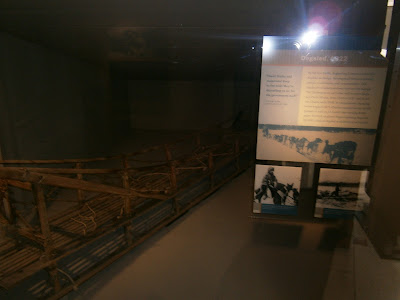
























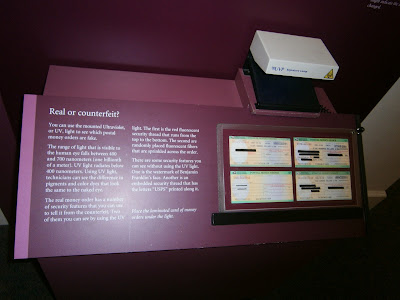




































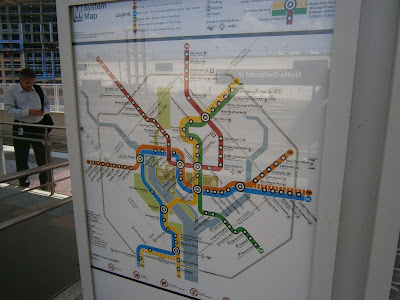







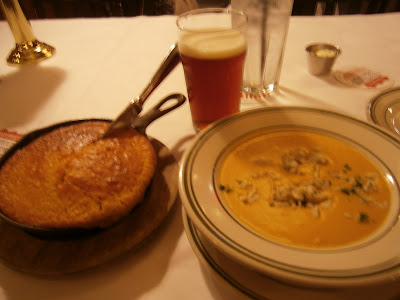
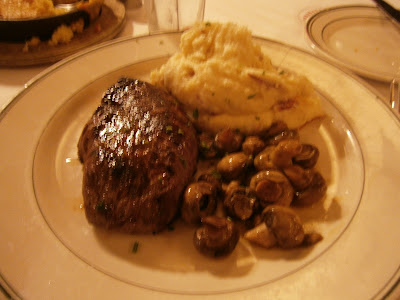
























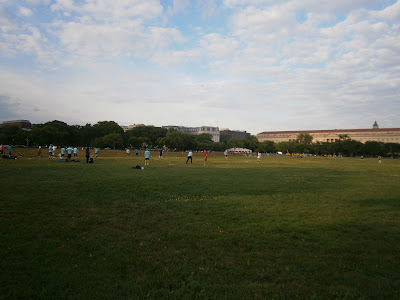

















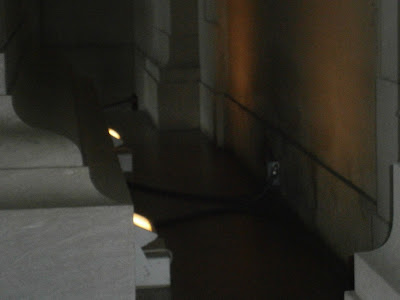
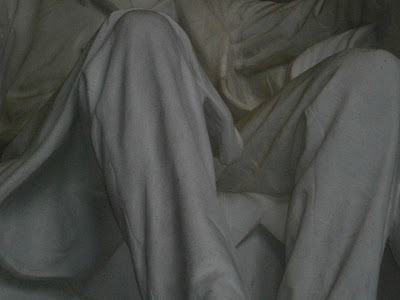















No comments:
Post a Comment